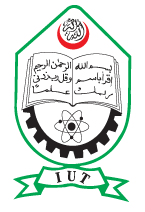Labs
Research is exciting and important; the generation of new and advanced knowledge requires innovative ideas, and different ways of seeing the world. It is important to disseminate, as well as to generate, research in order to make a positive cultural, social, environmental and economic impact.
Department has several research lab namely structure lab, concrete lab, environmental engineering lab, hydraulics lab, transportation lab, geotechnical lab etc. These laboratories are highly equipped to conduct quality research projects in the field of civil and environmental engineering. To carry out the research activities in a larger scale the university is collaborating with reputed international and local organisation.
1. Environmental Engineering Laboratory
Environmental Engineering is a field of broad scope that draws on such disciplines as chemistry, ecology, geology, hydraulics, hydrology, microbiology, economics, and mathematics. It was traditionally a specialized field within civil engineering and was called sanitary engineering until the mid-1960s when the more accurate name Environmental Engineering was adopted. Environmental engineers work to improve recycling, waste disposal, public health, and water and air pollution control. Environmental Engineers may also help come up with ways to treat water that is contaminated by bacteria and chemicals that could be harmful to our health and do the environment.
The Environmental Engineering Laboratory of the Civil and Environmental Engineering department of IUT offers exceptional facilities for detailed analysis of potable water and wastewater in terms of physical, chemical, and microbiological parameters. The environmental research lab is furnished with modern facilities and students perform experiments and final year research projects required by courses or sessional. Furthermore, the faculty members conduct technical studies and lab-based analyses in the fields of water, wastewater, soil, and soil-waste engineering. Some of the important apparatuses the lab has been mentioned below:
- Spectrophotometer,
- Microscope (Model: Zeiss Primo Star),
- Turbidimeter,
- Jar Test Apparatus,
- BOD Trak,
- COD Digester,
- TOC (Total Organic Carbon)
- Incubator (Coliforms (35℃) and Fecal Coliforms (44℃)),
- Drying Ovens (103℃),
- Sterilizers (Autoclaves).
Lab In-Charge: Dr. Amimul Ahsan
Broad Research Areas under This Lab:
2. Environmental Pollution Management
3. Solid Waste Management
4. Water and Wastewater Quality and Assessment and Treatment Technology
5. Plastic Pollution
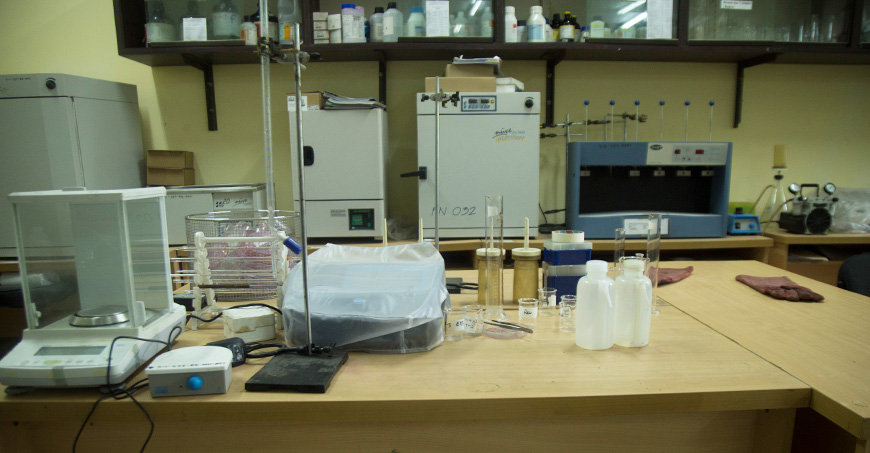
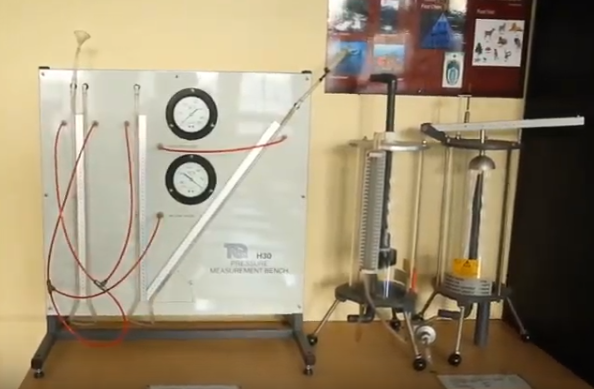
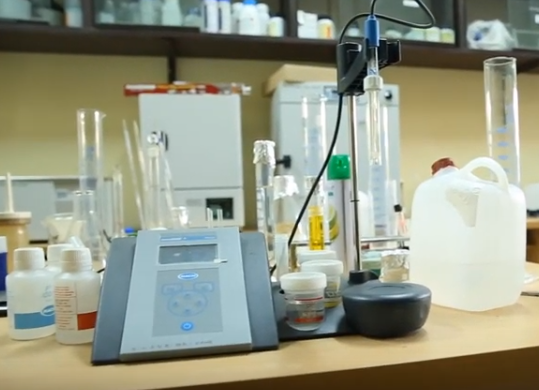
The Environmental Engineering Laboratory of the Civil and Environmental Engineering department of IUT offers exceptional facilities for detailed analysis of potable water and wastewater in terms of physical, chemical, and microbiological parameters. The environmental research lab is furnished with modern facilities and students perform experiments and final year research projects required by courses or sessional. Furthermore, the faculty members conduct technical studies and lab-based analyses in the fields of water, wastewater, soil, and soil-waste engineering. Some of the important apparatuses the lab has been mentioned below:
- Spectrophotometer,
- Microscope (Model: Zeiss Primo Star),
- Turbidimeter,
- Jar Test Apparatus,
- BOD Trak,
- COD Digester,
- TOC (Total Organic Carbon)
- Incubator (Coliforms (35℃) and Fecal Coliforms (44℃)),
- Drying Ovens (103℃),
- Sterilizers (Autoclaves).
Lab In-Charge: Dr. Amimul Ahsan
Broad Research Areas under This Lab:
2. Environmental Pollution Management
3. Solid Waste Management
4. Water and Wastewater Quality and Assessment and Treatment Technology
5. Plastic Pollution



2. Concrete and structural Testing Laboratory
The key objective of Concrete Laboratory is to provide the students hands on experience in the testing of various construction materials available in the market such as
The laboratory is equipped with apparatuses that are used to determine various physical and mechanical properties of materials such as
-Normal consistency of cementitious materials.
-Initial and final setting time of cement.
-Bulk density of aggregates (both fine and coarse).
-Specific gravity of aggregates.
-Absorption capacity of aggregate.
-Loss Angeles abrasion value.
-Particle size distribution (sieve analysis).
-Fineness modulus.
-Flakiness index.
-Angularity number.
-Slump of fresh concrete mix.
-Direct compressive strength of concrete.
There are an oven and a furnace capable of generating 400°C of temperature which are used to investigate the extraction of the supplementary cementing materials (SCM) from local resources.
The laboratory is also engaged in several research projects which focus on the recycling, sustainability, and durability of construction materials for which set-ups to conduct Rapid Chloride Permeability Test (RCPT), Accelerated Carbonation test, Chloride ingress test are present. To enhance the research facilities several temperature-controlled curing tubs are present in the laboratory where concrete specimens can be cured in a controlled environment.
There are apparatuses present in the laboratory to conduct many non-destructive tests on concrete such as Portable Ultrasonic Nondestructive Digital Indicating Tester (PUNDIT) and CorroMap device.
In recent times a Scanning Electron Microscope (SEM) is also been added to the laboratory to do research on construction materials on a nanoscopic scale. Which will help to investigate the corrosion initiation process in materials and also be a part of the researches focusing on the durability of construction materials.
The Structure Laboratory plays a fundamental role in understanding the behavior of various structural elements. The lab is equipped with a hydraulic powered Universal Testing Machine (UTM) which is used to investigate the flexure and shear behavior of beams and tensile and compressive strength of concrete made with different materials. There are equipment present to perform
-Buckling test of steel columns.
-Hardness test on metal specimens.
-Impact test on metal specimens.
Lab In Charge: Dr. Md. Imran Kabir (Structural Lab)
Dr. Tanvir Ahmed (Concrete Lab)
Broad Research Areas Under This Lab:
1. Durability of concrete
2. Sustainability of concrete structures under severe environment.
3. Mechanical performance of deteriorated concrete structures.
4. Behavior of deteriorated concrete structures under dynamic loading.
5. Modeling of deterioration rate of concrete structures.
6. CO2 credit based on the long-term durable concrete construction.
7. Recycling of demolished concrete as aggregates.
8. Repair and strengthening of concrete structures.
9. Health monitoring of concrete structures.
10. Life cycle management of concrete structures.
11. Corrosion of steel bars in concrete due to carbonation and chloride ingress.
12. Light weight concrete.
13. High-strength concrete.
14. Self-compacting concrete.
15. Making smart concrete structures for long-term durability.
16. Development of sustainable road infrastructure.
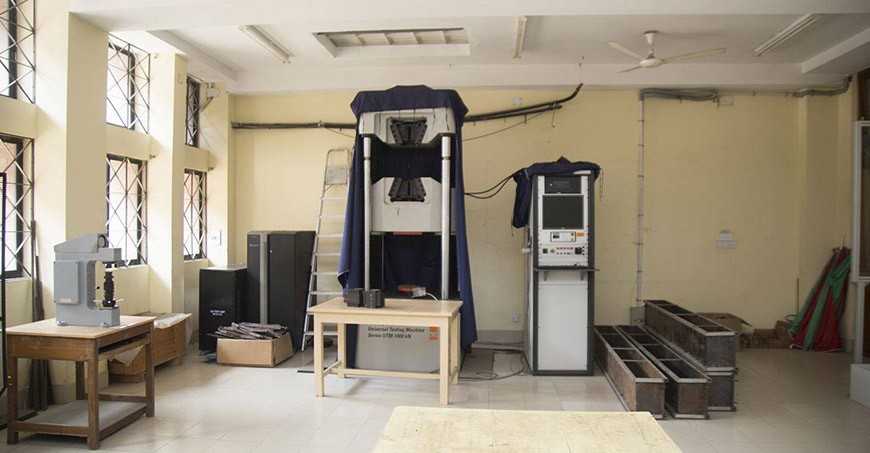
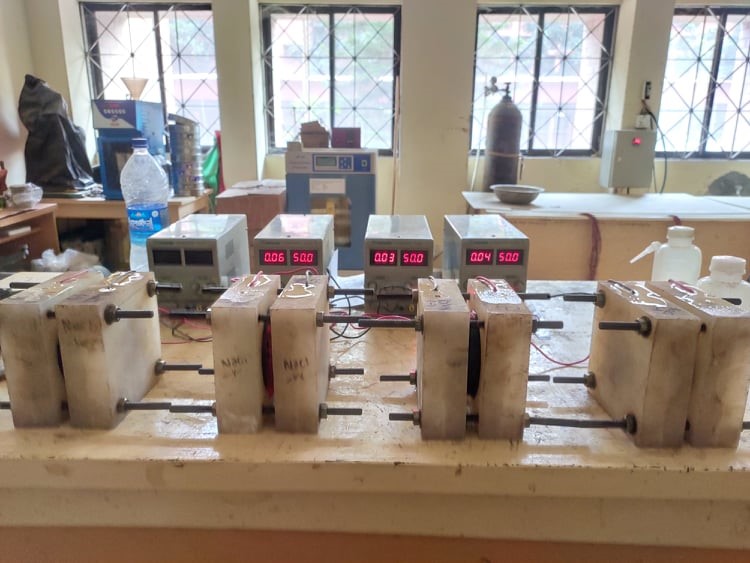
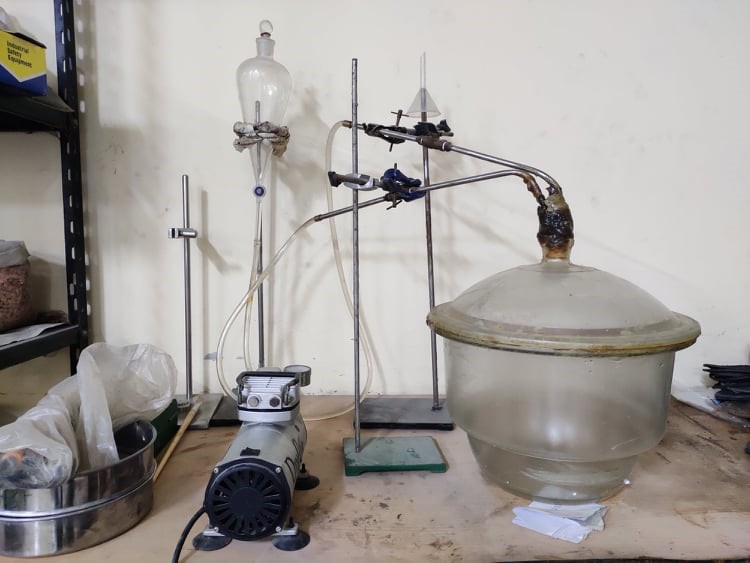
The laboratory is equipped with apparatuses that are used to determine various physical and mechanical properties of materials such as
-Normal consistency of cementitious materials.
-Initial and final setting time of cement.
-Bulk density of aggregates (both fine and coarse).
-Specific gravity of aggregates.
-Absorption capacity of aggregate.
-Loss Angeles abrasion value.
-Particle size distribution (sieve analysis).
-Fineness modulus.
-Flakiness index.
-Angularity number.
-Slump of fresh concrete mix.
-Direct compressive strength of concrete.
There are an oven and a furnace capable of generating 400°C of temperature which are used to investigate the extraction of the supplementary cementing materials (SCM) from local resources.
The laboratory is also engaged in several research projects which focus on the recycling, sustainability, and durability of construction materials for which set-ups to conduct Rapid Chloride Permeability Test (RCPT), Accelerated Carbonation test, Chloride ingress test are present. To enhance the research facilities several temperature-controlled curing tubs are present in the laboratory where concrete specimens can be cured in a controlled environment.
There are apparatuses present in the laboratory to conduct many non-destructive tests on concrete such as Portable Ultrasonic Nondestructive Digital Indicating Tester (PUNDIT) and CorroMap device.
In recent times a Scanning Electron Microscope (SEM) is also been added to the laboratory to do research on construction materials on a nanoscopic scale. Which will help to investigate the corrosion initiation process in materials and also be a part of the researches focusing on the durability of construction materials.
The Structure Laboratory plays a fundamental role in understanding the behavior of various structural elements. The lab is equipped with a hydraulic powered Universal Testing Machine (UTM) which is used to investigate the flexure and shear behavior of beams and tensile and compressive strength of concrete made with different materials. There are equipment present to perform
-Buckling test of steel columns.
-Hardness test on metal specimens.
-Impact test on metal specimens.
Lab In Charge: Dr. Md. Imran Kabir (Structural Lab)
Dr. Tanvir Ahmed (Concrete Lab)
Broad Research Areas Under This Lab:
1. Durability of concrete
2. Sustainability of concrete structures under severe environment.
3. Mechanical performance of deteriorated concrete structures.
4. Behavior of deteriorated concrete structures under dynamic loading.
5. Modeling of deterioration rate of concrete structures.
6. CO2 credit based on the long-term durable concrete construction.
7. Recycling of demolished concrete as aggregates.
8. Repair and strengthening of concrete structures.
9. Health monitoring of concrete structures.
10. Life cycle management of concrete structures.
11. Corrosion of steel bars in concrete due to carbonation and chloride ingress.
12. Light weight concrete.
13. High-strength concrete.
14. Self-compacting concrete.
15. Making smart concrete structures for long-term durability.
16. Development of sustainable road infrastructure.



3. Geotechnical Engineering Lab
Geotechnical Engineering, also known as geotechnics, is an engineering discipline that deals with soil and rock behavior in an engineering perspective.It also involves assessing slope stability and the risk of landslides, rockfall, and avalanches.
From a scientific perspective, geotechnical engineering largely involves defining the soil's strength and deformation properties. Clay, silt, sand, rock and snow are important materials in geotechnics. Geotechnical engineering includes specialist fields such as soil and rock mechanics, geophysics, hydrogeology and associated disciplines such as geology. Geotechnical engineering and engineering geology are a branch of civil engineering.
The Geotechnical Engineering Laboratory of Islamic University of Technology is equipped with standard and advanced soil testing apparatuses to conduct different types of tests on soil,
-Classification Test,
-Compaction Test,
-Shear Strength Test,
-Relative Density Test,
-Unconfined Compression Test,
-Permeability Test: Constant Head,
-Direct Shear Test Machine,
-Consolidation Machine,
-Atterberg Limits Test,
-Specific Gravity Test,
-Grain Size Analysis both Sieve and Hydrometer Test,
-Field Identification Test.
The primary aim of Geotechnical Lab is to advance the theory and application of soil mechanics. This laboratory provides both students and faculty members with excellent opportunity to conduct quality research. The laboratory also supports field boring, testing and sample collection.
Lab In-charge: Mohammad Abu Umama
Broad Research Areas Under This Lab:
-Tunneling
-Embankment Problems
-Earthquake
-Modelling in Geotechnical Engineering
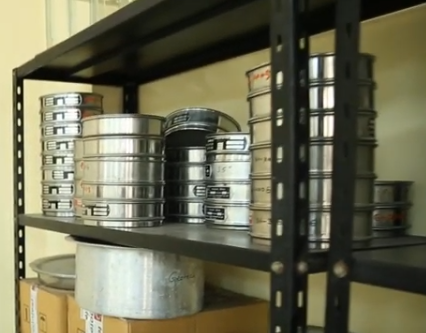
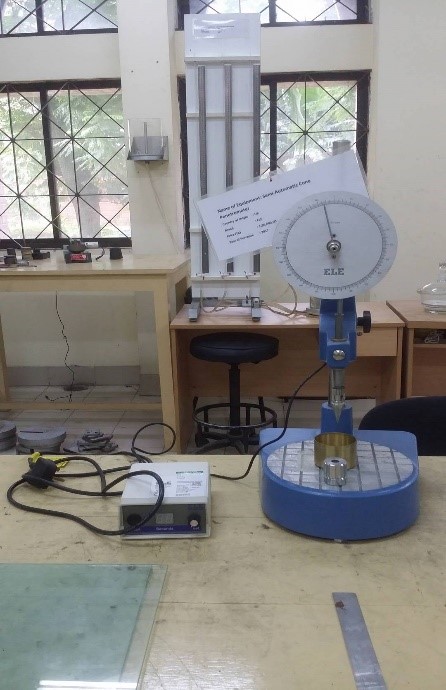
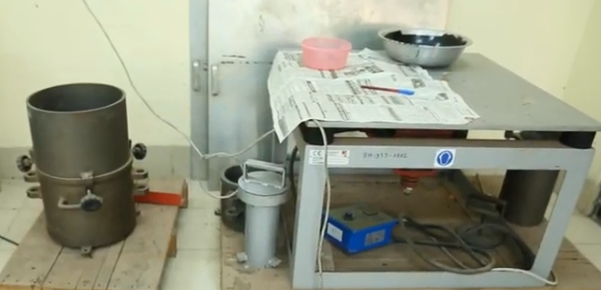
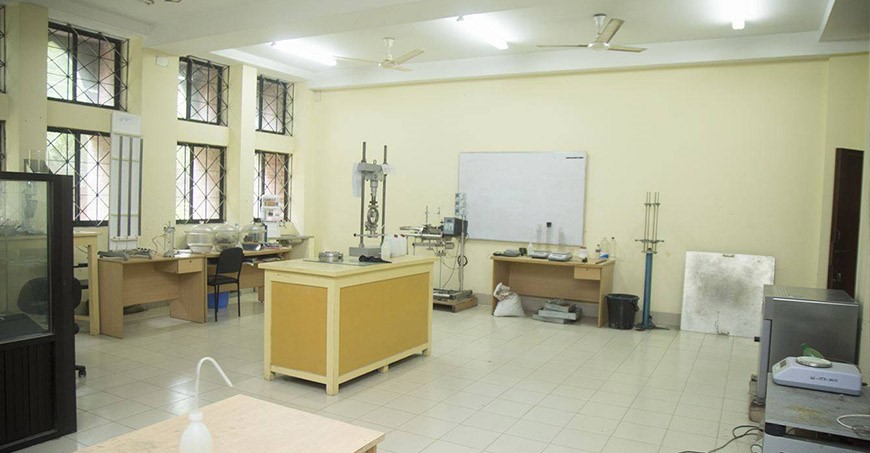
From a scientific perspective, geotechnical engineering largely involves defining the soil's strength and deformation properties. Clay, silt, sand, rock and snow are important materials in geotechnics. Geotechnical engineering includes specialist fields such as soil and rock mechanics, geophysics, hydrogeology and associated disciplines such as geology. Geotechnical engineering and engineering geology are a branch of civil engineering.
The Geotechnical Engineering Laboratory of Islamic University of Technology is equipped with standard and advanced soil testing apparatuses to conduct different types of tests on soil,
-Classification Test,
-Compaction Test,
-Shear Strength Test,
-Relative Density Test,
-Unconfined Compression Test,
-Permeability Test: Constant Head,
-Direct Shear Test Machine,
-Consolidation Machine,
-Atterberg Limits Test,
-Specific Gravity Test,
-Grain Size Analysis both Sieve and Hydrometer Test,
-Field Identification Test.
The primary aim of Geotechnical Lab is to advance the theory and application of soil mechanics. This laboratory provides both students and faculty members with excellent opportunity to conduct quality research. The laboratory also supports field boring, testing and sample collection.
Lab In-charge: Mohammad Abu Umama
Broad Research Areas Under This Lab:
-Tunneling
-Embankment Problems
-Earthquake
-Modelling in Geotechnical Engineering




4. Transportation Laboratory
Transportation engineering in the Department of Civil and Environmental Engineering of IUT fringes teaching and research of transportation system planning, design, and operations. Our department has been doing remarkable research in the field of transportation engineering. The students of this department have a significant impact in the fields of transportation planning, traffic management, road safety & comfort, ITS (Intelligent Transportation System), and other exigent fields.
At present, the CEE department of IUT is having the only microsimulation and macro simulation lab in Bangladesh. Microsimulation and macro simulation are the modern-day analytical tools that are incomparable for the transportation engineers of this generation to overcome modern-day traffic problems along with learning the traditional methods. CEE department of IUT aims to incorporate the students with knowledge about the latest advancements in transportation sectors and also to make them capable of using those tools in their favor.
The transportation lab provides the necessary equipment for testing of different road construction materials, to assist the students in completing the laboratory exercises and to increase their understanding of some important concepts, such as:
• Aggregate Impact Value (AIV),
• Aggregate Crushing Value (ACV),
• Flakiness Index (FI),
• Elongation Index (EI),
• Angularity Number (AN),
• Specific Gravity of Semi-Solid Bituminous Material,
• Penetration, Ductility, Softening Point of Bituminous Material,
• California Bearing Ratio Test (CBR),
• Marshall Method of Mix Design.
Lab In-charge: Dr. Nazmus Sakib
Broad Research Areas Under This Lab:
-Transportation Planning
-Intelligent Transportation System (ITS)
-Traffic Management
-Road Safety in Developing countries
-Modelling Transportation
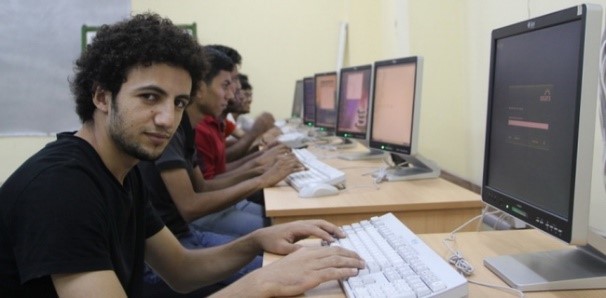
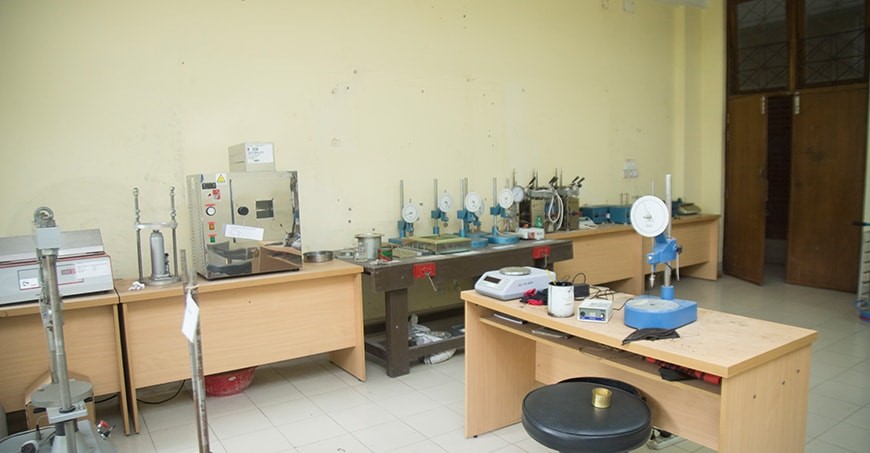
At present, the CEE department of IUT is having the only microsimulation and macro simulation lab in Bangladesh. Microsimulation and macro simulation are the modern-day analytical tools that are incomparable for the transportation engineers of this generation to overcome modern-day traffic problems along with learning the traditional methods. CEE department of IUT aims to incorporate the students with knowledge about the latest advancements in transportation sectors and also to make them capable of using those tools in their favor.
The transportation lab provides the necessary equipment for testing of different road construction materials, to assist the students in completing the laboratory exercises and to increase their understanding of some important concepts, such as:
• Aggregate Impact Value (AIV),
• Aggregate Crushing Value (ACV),
• Flakiness Index (FI),
• Elongation Index (EI),
• Angularity Number (AN),
• Specific Gravity of Semi-Solid Bituminous Material,
• Penetration, Ductility, Softening Point of Bituminous Material,
• California Bearing Ratio Test (CBR),
• Marshall Method of Mix Design.
Lab In-charge: Dr. Nazmus Sakib
Broad Research Areas Under This Lab:
-Transportation Planning
-Intelligent Transportation System (ITS)
-Traffic Management
-Road Safety in Developing countries
-Modelling Transportation


5. Hydraulic Laboratory
Hydraulics is a technology and applied science which uses the knowledge of engineering, chemistry, and other sciences which deal with the mechanical properties of fluids. The mechanical properties of fluids consist of a flow of fluids, head of fluid flow, the impact force of flowing fluid, and statics pressure force.
Islamic University of Technology’s Hydraulic Laboratory is part of a unique research facility designed for hydraulic model studies, hydraulic performance testing, and research in the fields of open channel and closed conduit hydraulics. It is intended for research of hydraulic and hydro-technical problems of water structures like dam, water retaining structure and also for water management facilities like water distribution system, sewage networks, and irrigation by the means of physical modeling.
There are apparatuses present in the laboratory which are used to determine properties of fluid. The main objective of this laboratory is to provide students hands on experience for operating these apparatus to measure these properties for various conditions such as:
Flow over flat and curved surfaces.
Buoyant objects
Closed piping system
Pumping system.
The list of equipment in the hydraulic laboratory are as follows:
-Open channel (5 Meter)
-Hydraulic bench
-Impact of jet apparatus
-Orifice meter apparatus
-Venturmeter
-Center of pressure apparatus
-Pressure measurement apparatus
-Flow measurement apparatus.
Lab In-Charge: Dr. Amimul Ahsan
Broad Research Areas under This lab:
-Feasibility and Reliability of Rainwater Harvesting in Urban Areas of Bangladesh.
-Urban and Rural Water Supply, Sanitation and Risk Assessment.
-Climate Change and its impact on urban and rural water supply.
Islamic University of Technology’s Hydraulic Laboratory is part of a unique research facility designed for hydraulic model studies, hydraulic performance testing, and research in the fields of open channel and closed conduit hydraulics. It is intended for research of hydraulic and hydro-technical problems of water structures like dam, water retaining structure and also for water management facilities like water distribution system, sewage networks, and irrigation by the means of physical modeling.
There are apparatuses present in the laboratory which are used to determine properties of fluid. The main objective of this laboratory is to provide students hands on experience for operating these apparatus to measure these properties for various conditions such as:
Flow over flat and curved surfaces.
Buoyant objects
Closed piping system
Pumping system.
The list of equipment in the hydraulic laboratory are as follows:
-Open channel (5 Meter)
-Hydraulic bench
-Impact of jet apparatus
-Orifice meter apparatus
-Venturmeter
-Center of pressure apparatus
-Pressure measurement apparatus
-Flow measurement apparatus.
Lab In-Charge: Dr. Amimul Ahsan
Broad Research Areas under This lab:
-Feasibility and Reliability of Rainwater Harvesting in Urban Areas of Bangladesh.
-Urban and Rural Water Supply, Sanitation and Risk Assessment.
-Climate Change and its impact on urban and rural water supply.
Advisory, Consultancy, Extension, and Testing Services (ACETS)
IUT CEE also offers a diverse and reliable testing-and-consultancy service through its 'Advisory, Consultancy, Extension, and Testing Services' (ACETS) section. Major construction firms as well as government and private organisations has taken advantage of the cutting edge testing facilities available at our laboratory for reliable quality monitoring and investigational works. IUT CEE also offers consultation services to solve complex engineering problems and resolve complicated scenarios with the help of the notable expertise available in our faculty.
Contact Persons
Dr. Nazmus Sakib, Dr. Amimul Ahsan
A list of tests and services (with rates) is available in this link.
Testing of Materials and Services November 2024_web.pdf
Contact Persons
Dr. Nazmus Sakib, Dr. Amimul Ahsan
A list of tests and services (with rates) is available in this link.
Testing of Materials and Services November 2024_web.pdf
